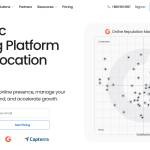In today’s highly competitive commercial landscape, businesses that don’t continue to grow usually don’t survive long. High-growth companies tend to enjoy faster cash flows and attract more talented employees. They are also generally capable of fulfilling orders quickly and thus maintaining customer satisfaction. A company that continues to grow has a much better chance of enjoying long-term success than its stagnant counterparts.
So, what should you do if your company is dead in the water? Like a motorboat that stalls in open water, you’re likely to float into unwanted territory if you don’t take control. With quick action, it’s possible to restart your engine and begin moving in the right direction once again. Here are three great ways to overcome stalled business growth and drive your company toward increased success.
1. Focus on Your Content
When establishing new relationships or fostering old ones, what you say is very important. If you’re rude, unhelpful, or never have anything interesting to say, you’ll most likely lose friends fast. The same applies to the content your company puts out for current and new customers to interact with. Think of your content as a conversation with your target audience. It needs to be interesting, positive, and helpful if you expect it to grasp the attention of viewers.
If your content is boring, irrelevant, or simply unpleasant, you’ll have a hard time earning new business. Look at your content with a critical eye to determine where it falls short and how you can improve it. If you find yourself yawning from boredom while reading, it’s time to liven up your language a bit. This is especially true if you work in an industry that’s naturally complex, such as the legal and technical industries. You may need to work harder to ensure your content remains interesting and easy for the average person to understand.
In addition to livening up your language, aim to improve viewer understanding of your services and products with content clusters. These make it easier to educate your target audience in easy-to-digest, bite-size pieces. Ideal content cluster structures typically consist of a main topic (or pillar page) and a variety of supporting pages. For example, your pillar page might be “How to Start a Business YouTube Channel.” Then, your supporting pages within the topic cluster could break down each step required to create, publish, and promote exceptional business YouTube videos.
2. Review Your Business Goals
If you don’t create specific business goals and establish the steps required to reach them, you’re almost guaranteed to fail. When you don’t have a clear destination, it’s easy to become distracted and take unnecessary detours along the way. That’s why it’s essential to establish optimistic business goals and work to reach those every day.
A business objective should be an accomplishment you want to reach by a certain date or range of dates. Each target you make should support the overarching vision of business growth and success. Ideally, you should have a long-term goal that you plan to reach in five to 10 years. Once you have this overarching plan, create short-term milestones to help you stay on the right track. Your short-term check points should be broken down into goals you want to accomplish with three-years, one-year, and quarterly.
For example, let’s say your long-term aim is to become the preferred brand name in your industry in 10 years. To reach your goal, you’ll need to establish a variety of mid- and short-term milestones. A mid-term target might be to improve the quality of your products so customers prefer them over your competition. A short-term objective might be to hire an exceptional team of engineers who can improve your product features.
3. Give Customers a Good First Impression
You could have the best products, website, and content in the industry. But if your customers don’t like shopping with you, your business growth may still stall. Don’t underestimate the impact of the average customer experience on the long-term success of your organization. Making customer retention a priority can go a long way toward increasing your annual profit.
Every time a customer makes a first purchase, your business has a unique opportunity to give a positive first impression. To do this, you need to ensure your onboarding process is smooth and pleasant. If your customer runs into any unexpected delays or problems while making their first purchase, you may lose their business forever.
To support a positive first interaction, make sure your checkout process is quick and efficient. Don’t force customers to create an account with you in order to make a purchase. You should also consider saving customer carts so they can return and complete their purchase if they get distracted. Finally, a good practice is to follow up after the initial purchase by thanking the customer or offering a special coupon for their return business.
It’s never a good sign when your business growth stalls. Fortunately, you don’t have to be dead in the water if this happens to you. Use these tips to overcome business stagnation and stimulate momentum once again.
Lynn Martelli is an editor at Readability. She received her MFA in Creative Writing from Antioch University and has worked as an editor for over 10 years. Lynn has edited a wide variety of books, including fiction, non-fiction, memoirs, and more. In her free time, Lynn enjoys reading, writing, and spending time with her family and friends.















